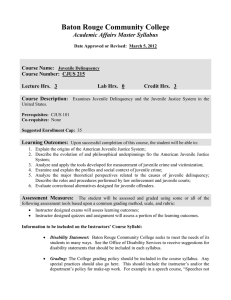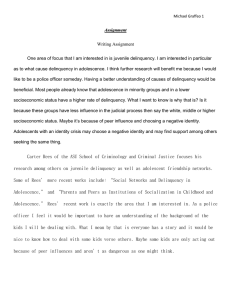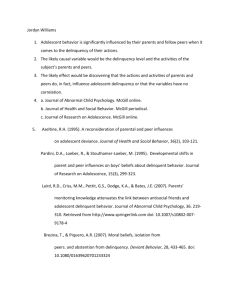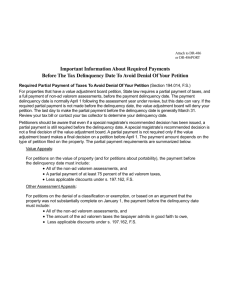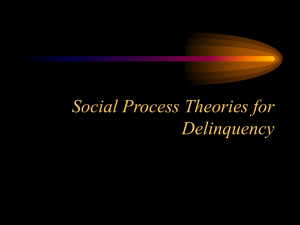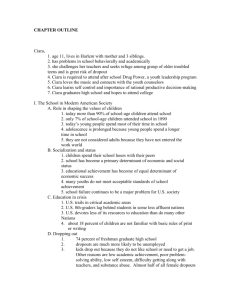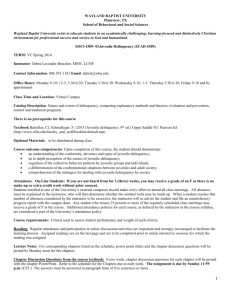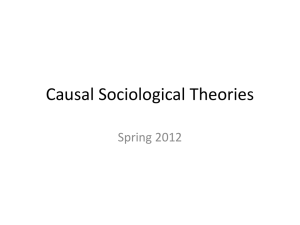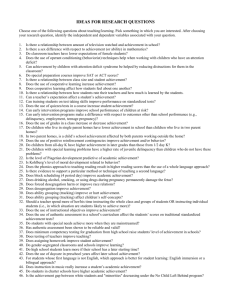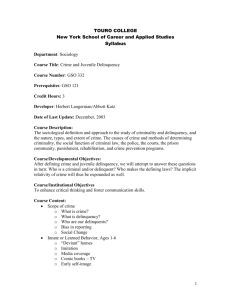Transition Guide
advertisement
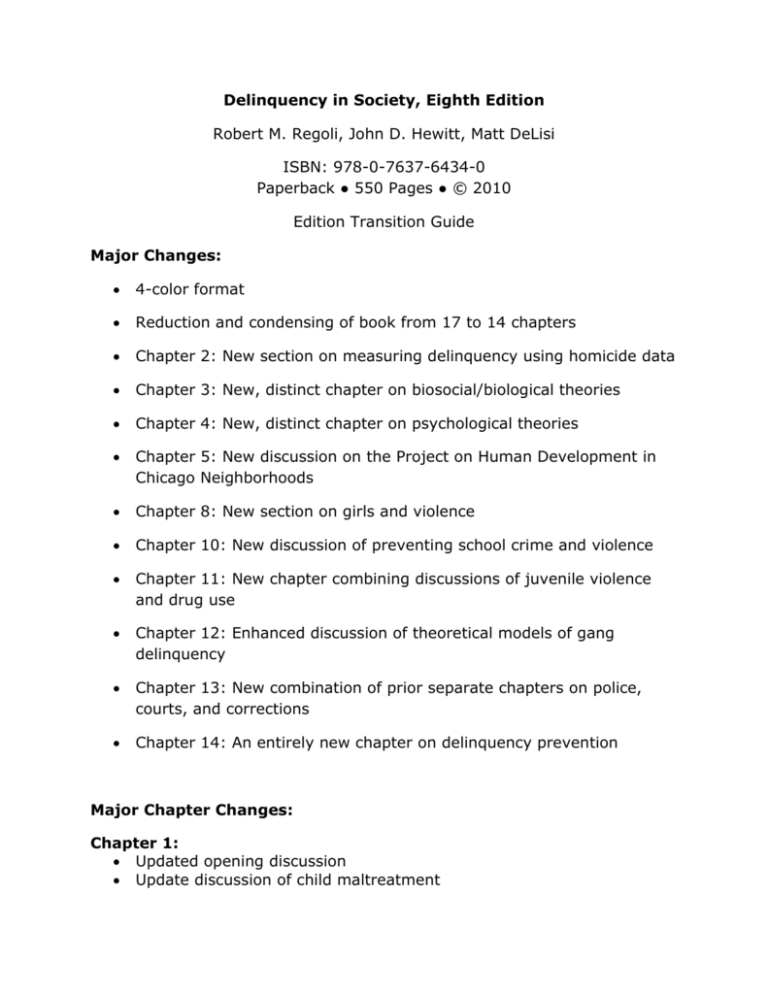
Delinquency in Society, Eighth Edition Robert M. Regoli, John D. Hewitt, Matt DeLisi ISBN: 978-0-7637-6434-0 Paperback ● 550 Pages ● © 2010 Edition Transition Guide Major Changes: 4-color format Reduction and condensing of book from 17 to 14 chapters Chapter 2: New section on measuring delinquency using homicide data Chapter 3: New, distinct chapter on biosocial/biological theories Chapter 4: New, distinct chapter on psychological theories Chapter 5: New discussion on the Project on Human Development in Chicago Neighborhoods Chapter 8: New section on girls and violence Chapter 10: New discussion of preventing school crime and violence Chapter 11: New chapter combining discussions of juvenile violence and drug use Chapter 12: Enhanced discussion of theoretical models of gang delinquency Chapter 13: New combination of prior separate chapters on police, courts, and corrections Chapter 14: An entirely new chapter on delinquency prevention Major Chapter Changes: Chapter 1: Updated opening discussion Update discussion of child maltreatment Updated discussion of social and legal definitions of delinquency New theme box discussing parent-liability Chapter 2: New section of measuring delinquency using homicide data Updated discussion of major criminal career studies Enhanced discussion of Elijah Anderson’s Code of the Street hypothesis Chapter 3: Entire distinct chapter on biosocial/biological theories Updated discussion of lead-delinquency relationship Expanded discussion and new figures of brain scans and behavior New and updated discussion on biology and crime Chapter 4: Entire distinct chapter on psychological theories New section on moral development theory New section on personality theory New sections on aggression, oppositional defiant disorder, and conduct disorder Chapter 5: New discussion on the Project on Human Development in Chicago Neighborhoods New figure on race/ethnic differences in delinquent development New discussion on personal competence, prosocial competence, and prosocial behavior as characteristics of good kids from bad neighborhoods Chapter 6: Updated discussion of theory tests Revised discussion of differential oppression theory Chapter 7: New section on theory/research by David Farrington New section on theory/research by Sarnoff Mednick and Patricia Brennan New box feature on the development of an extreme delinquent career Chapter 8: New section on girls and violence Updated discussion of biological and psychological theories and female delinquency Chapter 9: Enhanced discussion of child maltreatment Updated literature on family correlates of delinquency Chapter 10: Expanded discussion of bullying in schools Added discussion of disciplinary actions taken by schools in reaction to school violence Expanded discussion of schools, children, and the law, which now includes a discussion of the rights of disabled students facing suspension Updated discussion of corporal punishment Added discussion on prevention of school crime and violence with new sections on zero-tolerance policies and reducing school-risk factors Chapter 11: Entirely new combined chapter on violence, drug use, and delinquency Enhanced discussion of links between drug use and delinquency Chapter 12: Updated discussion of the magnitude of the gang problem in the United States Enhanced discussion of theoretical models of gang delinquency Chapter 13: Distinct chapters on police, courts, and corrections combined into a single chapter on juvenile justice Updated discussion of police juvenile encounters Updated discussion of juvenile detention centers Updated figure on juvenile case processing Chapter 14: Entirely new chapter on delinquency prevention New discussions of early childhood development New discussions of model and promising prevention programs


